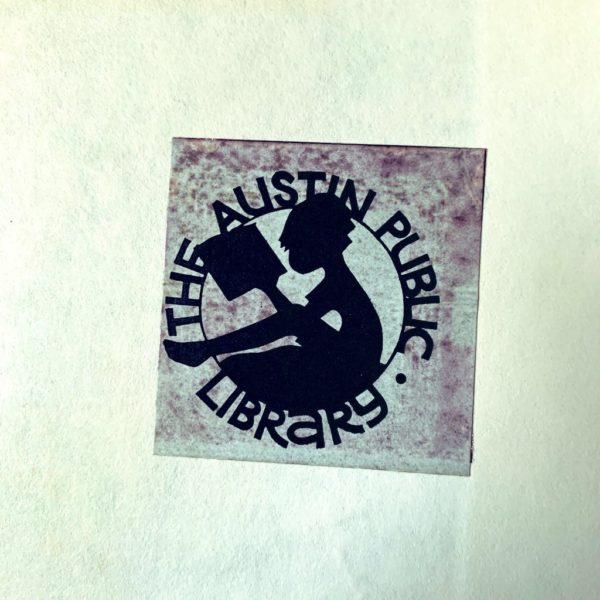
…can hold so much interest other than just the book itself. Look here at the Austin Public Library bookplate…
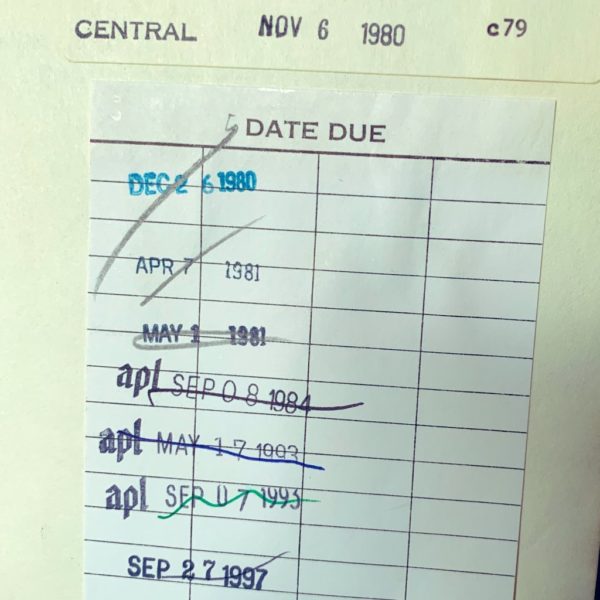
…and the date stamps…
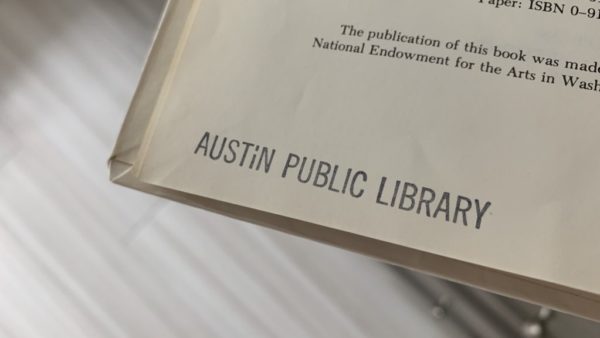
…and that lowercase “i” in the library stamp, trying its best to keep things weird!

…can hold so much interest other than just the book itself. Look here at the Austin Public Library bookplate…

…and the date stamps…

…and that lowercase “i” in the library stamp, trying its best to keep things weird!

I actually left the house last night to attend Edward Carey’s art show opening & book release for Little at the Central Library gallery. It was a special treat because after Edward read, he was interviewed by his wife, Elizabeth McCracken. (It was their first time onstage together.)

I’m inspired by how much pictures and words are fully integrated in Carey’s work. His stories often start with a drawing, and he’s drawing constantly while writing. (I wondered about how much his visual thinking makes it into his classroom work — he mentioned that in his courses at UT he talks to his students about maps and the importance of knowing the worlds of your characters.) If you read this blog regularly, you might remember his bit on productive procrastination:
The exhibit (up until January) is very well done, and organized by book. (The second great exhibit I’ve seen in the space — the first was Lance Letscher.) Here is original artwork for The Iremonger Trilogy:
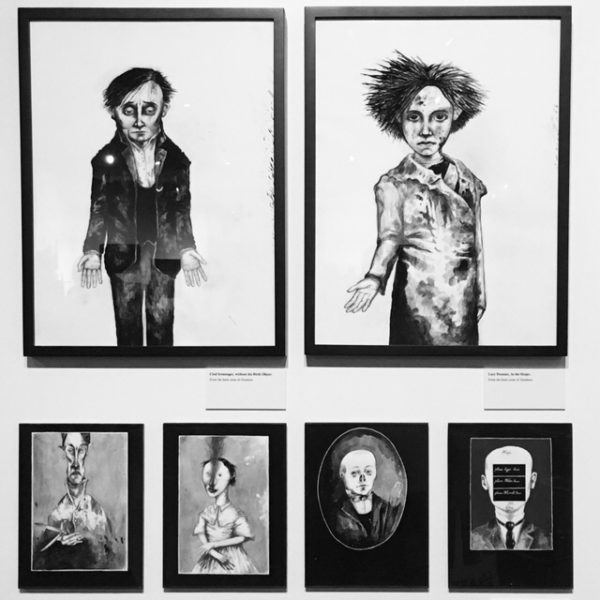
And here’s a drawing from the new one:
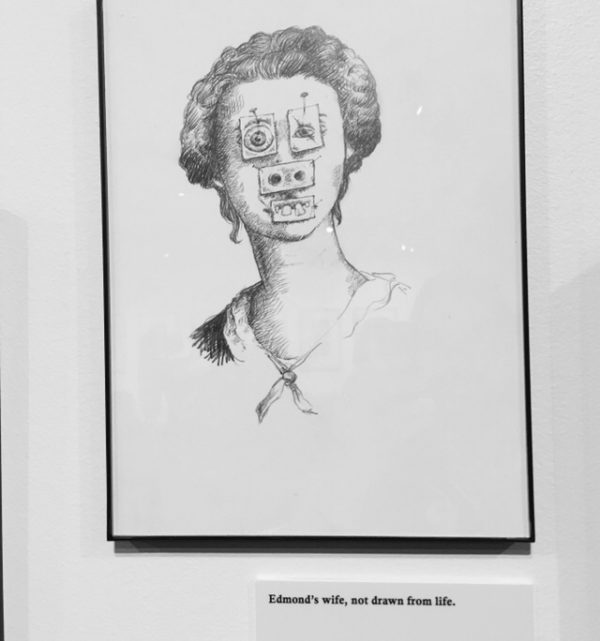
Carey’s work is wonderfully dark, but with a good splash of humor. (It’s fitting that earlier in the day my 3-year-old was drawing pages out of Edward Gorey’s The Gashlycrumb Tinies.)
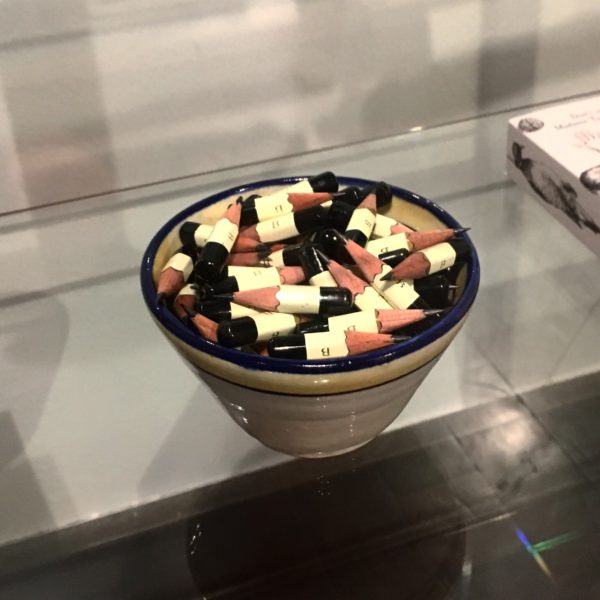
There’s a lot to like in the show, but my favorite thing might’ve been this bowl of his pencil stubs — Tombow Bs, I think— which resembled an ashtray with cigarette butts. (Carey is a former chain smoker.)

Stuart Kells, author of The Library: A Catalogue of Wonders, took his young children on a library world tour:
From our home base of Melbourne, Australia, we would build the trip around highlights. In Switzerland: Zurich’s Bibliothek and the wonderful 18th-century Abbey Library of St. Gall. In London: the British Library and Lambeth Palace. At Oxford, the Bodleian. In the U.S., the Morgan, the Folger, the Houghton, the Smithsonian, plus the great public libraries of New York and Boston, and the “head office” of them all: the Library of Congress.
A lovely idea: library tourism!
Even if you don’t plan a whole trip around them, libraries are excellent spots for weary travelers: free, quiet, cool, full of locals, and staffed by people whose job is to help any visitors who walk in the door.
Wherever I travel, I research the nearby libraries and try to pop into any I happen to come across while walking around. In Milan, I stumbled onto the Braidense National Library and saw an excellent exhibit of book art. Driving the California coast, I discovered that the public library in Encinitas has a view of the Pacific. This summer we’re planning a visit to the brand-new Eastham Public Library during a week on Cape Cod.
Of course, I’m also a big proponent of being a tourist in your own town. Here in Austin, we have a glorious new central library, and yet, I still meet people in town who haven’t seen it!
When friends visit, I say, “Let me take you to the library!” They think I’m nuts, but it’s really the best this city has to offer right now. (Especially in the sweltering summer.)
Above: inside the APL, below: outside the library, on the pedestrian path under the bridge
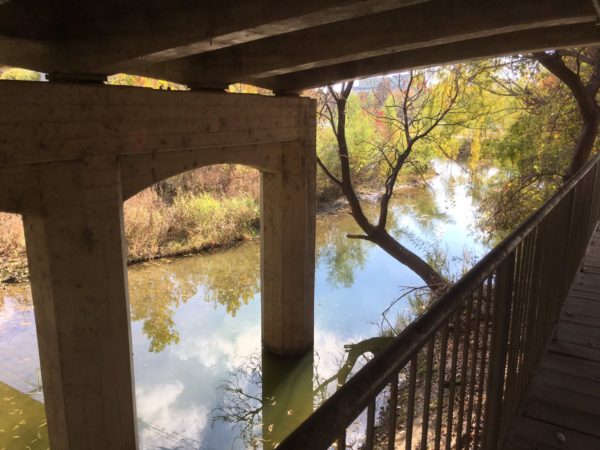

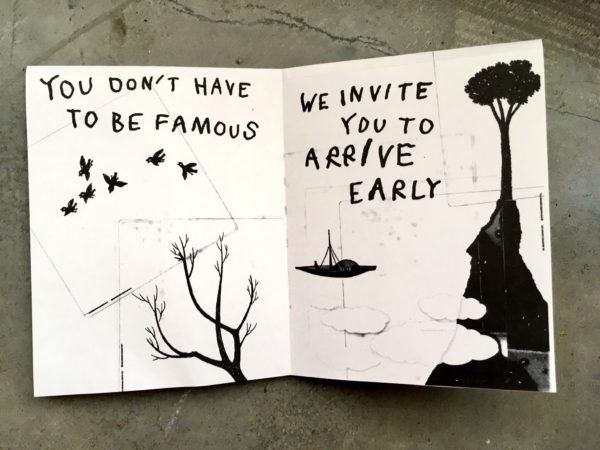

This morning I browsed the Austin Public Library’s fantastic zine collection (highlights: Nathaniel Russell’s Fliers and Jillian Barthold’s Scenes From Big Bend) and this afternoon the 5-year-old and I made a zine using Bruno Munari’s Plus and Minus transparencies that I picked up in Milan last year and lines from the APL’s events flier. Pretty fun day.
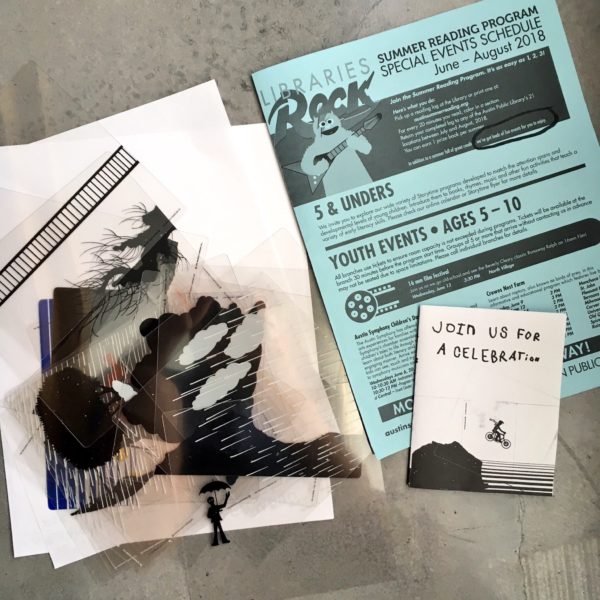
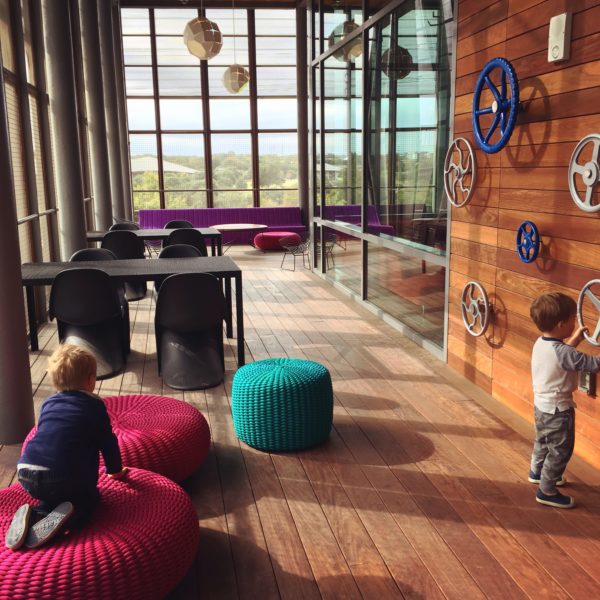
We finally got to visit the new central library here in Austin and it’s better than I had even hoped for. A stunning building full of spectacular views and wonderful spaces. We had to bribe the kids with lollipops to get them to leave.
Inside, I felt how Witold Rybczynski writes about feeling upon visiting Chicago’s Harold Washington Library Center in his essay, “A Good Public Building,” collected in Mysteries of The Mall:
The atmosphere was different from that in other public buildings. Unlike a museum, it had no price of admission, and the security guards were unobtrusive; the stacks were open, and the books were there to be picked up and leafed through. There was also a more mixed crowd than one finds in a museum or a concert hall: groups of teenagers, elderly men and women, college students, street people. In a period where even art museums are beginning to resemble shopping malls, this library stands apart. It didn’t make me feel like a consumer, or a spectator, or an onlooker; it made me feel like a citizen.
Feeling like a citizen. That’s it. Walking around this building might be the first time in a decade of living here that I’ve actually felt real civic pride. In his opening remarks, Mayor Adler called it “our cathedral… nothing less than a holy place for your imagination and collaboration.” I love that.
In a garbage year full of so many losses for democracy, this feels like a win.

This site participates in the Amazon Affiliates program, the proceeds of which keep it free for anyone to read.